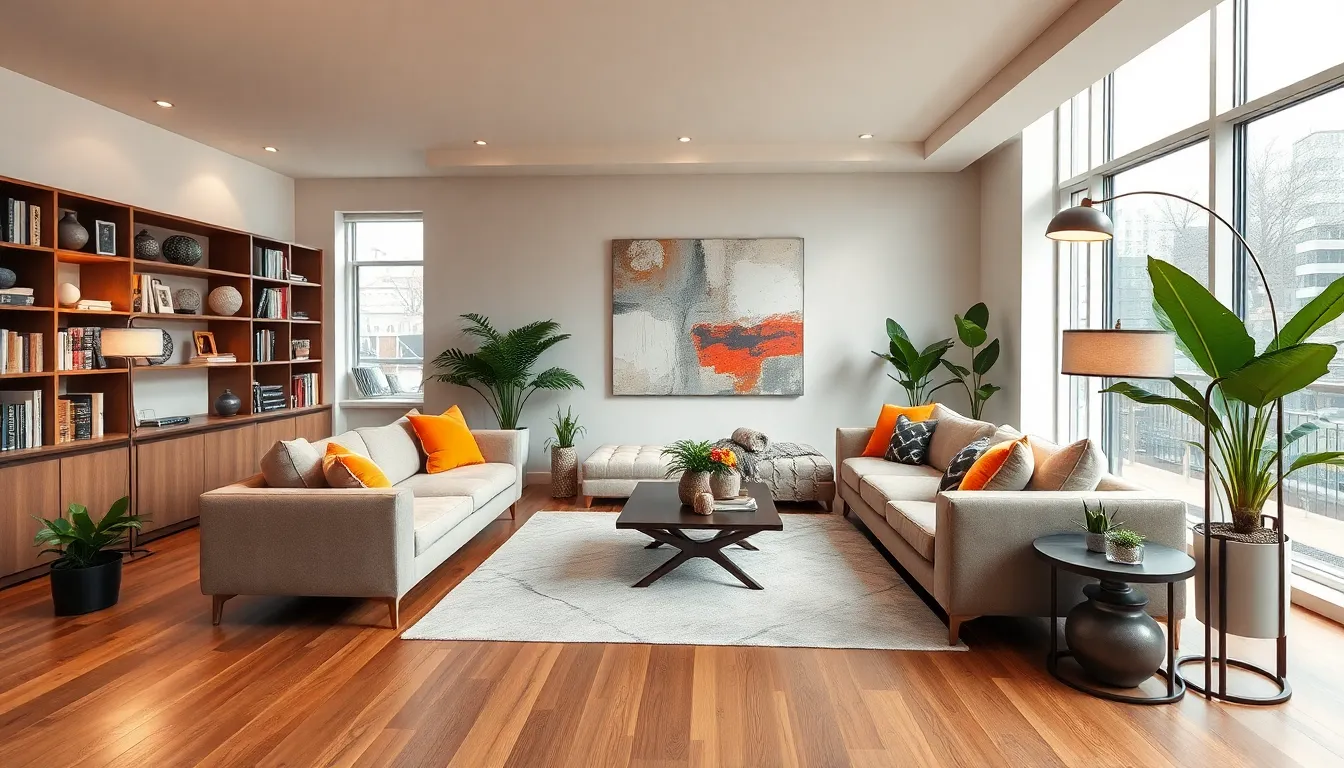Interior design is much more than just aesthetics: it’s about creating spaces that reflect one’s personality and improve functionality. With the growing popularity of services like Homerocketrealty, understanding the ins and outs of interior design has never been more essential. This article will investigate into the basics of interior design, key elements that make a space come alive, popular styles, and practical tips for designing a home that feels just right. Whether you’re starting from scratch or looking to refresh your existing space, the insights shared here will guide you in making informed decisions.
Table of Contents
ToggleUnderstanding Interior Design Basics

Interior design blends art and science to enhance the interior of a space, aiming to achieve a healthier and more aesthetically pleasing environment. This process involves understanding the needs and tastes of the inhabitants while also considering architectural details, spatial dimensions, and function. A well-designed interior can transform an ordinary space into an extraordinary one, improving not only how it looks but also how it feels and functions.
At its core, interior design involves several components:
- Space Planning: This involves the efficient arrangement of furniture and elements to optimize the functionality of a space.
- Color Theory: Colors can influence mood and energy levels, so choosing the right palette is crucial.
- Material Selection: The choice of materials can affect both the aesthetics and the durability of a space.
- Furniture and Decor: These elements should echo the desired style and purpose of the space, whether it’s for relaxation, work, or entertainment.
Key Elements of Interior Design
A successful interior design hinges on several key elements that work in harmony. Here are the most significant aspects:
- Line: This refers to the shape created when two points are connected. Lines in architecture can be straight, curved, or angular, and they can create a sense of movement or direction within a space.
- Form: This is the three-dimensional aspect of an object, encompassing its height, width, and depth. Forms can be geometric or organic, and they play a crucial role in how space feels.
- Color: As previously mentioned, color can drastically affect the mood of a space. Understanding how different colors interact is essential for creating a balanced environment.
- Texture: This includes both tactile and visual feel. Various textures can add depth and interest to a room, making it more inviting.
- Pattern: Patterns can celebrate visual diversity and can be implemented in fabrics, wallpapers, and rugs to create focus points.
- Light: Whether natural or artificial, lighting can transform a space. Different types of lighting create moods, enhance colors, and emphasize certain features.
Popular Interior Design Styles
Understanding various interior design styles can help homeowners identify what resonates most with their personal aesthetics. Here are some popular styles:
- Modern: Characterized by clean lines, minimalism, and a neutral color palette, modern design emphasizes simplicity and functionality.
- Contemporary: Often confused with modern, contemporary design reflects current trends and can include a variety of styles. This approach is ever-evolving and personal.
- Traditional: This style draws on the design elements of the past, featuring richer colors, classic furniture, and intricate details. It creates a sense of warmth and familiarity.
- Industrial: Inspired by warehouses and factories, industrial design uses raw materials like wood, metal, and concrete. The look often highlights structure and functionality.
- Scandinavian: This design focuses on simplicity, clean lines, and a muted color palette, emphasizing natural light and functional furnishings.
Tips for Designing Your Space
Designing a space can often feel overwhelming, but some practical tips can simplify the process:
- Define Function: Understand how you intend to use the space before making any decisions. This will guide your choices in layout and furniture.
- Establish a Budget: It’s essential to set financial boundaries. Prioritize spending on key elements like furniture and quality materials.
- Create a Mood Board: Collect visuals that resonate with your vision, which can help streamline selections and communicate ideas effectively.
- Be Mindful of Scale and Proportion: Ensure that your furniture and decor are in scale with the space and consider proportions for visual harmony.
- Incorporate Personal Touches: Infuse your personality into the design with artwork, photographs, or unique furniture pieces, making the space uniquely yours.
Incorporating Technology in Interior Design
As technology continues to evolve, its integration into interior design becomes increasingly crucial. From smart home devices to innovative materials, technology can enhance comfort, convenience, and aesthetics.
- Smart Lighting: Automated light systems allow for customizable ambiance and energy efficiency.
- Smart Thermostats: These devices improve climate control, making spaces more enjoyable while reducing energy costs.
- Integrated Sound Systems: High-quality sound systems can seamlessly blend with interiors, enhancing the entertainment experience.
- Technology-Infused Furniture: Modern furniture pieces often include built-in technology, enhancing functionality without sacrificing style. For instance, desks with built-in wireless charging stations marry design with practicality.
The Role of Color and Light
Color and light are fundamental components in interior design that work together to create immersive environments.
- Impact of Light on Color: Natural light can dramatically change how colors are perceived. A color may appear differently in the morning sun than in the evening glow.
- Creating Mood with Color: Cool colors typically promote calmness, while warm colors can energize. Designers need to consider the emotional response to color when selecting palettes for various rooms.
- Layering Light: Utilizing ambient, task, and accent lighting can enhance a space’s dimensions and create inviting atmospheres. This layered approach allows for flexibility, accommodating different activities throughout the day.
Conclusion
Interior design is an art that marries functionality with aesthetics, enhancing the way individuals experience their environments. With insights into the basics, elements, styles, and modern influences of interior design, homeowners can embark on creating spaces that not only look beautiful but also cater to their lifestyle needs. As trends continue to evolve, embracing a culture of personal expression and technology integration will lead to inspiring and adaptive living spaces.
